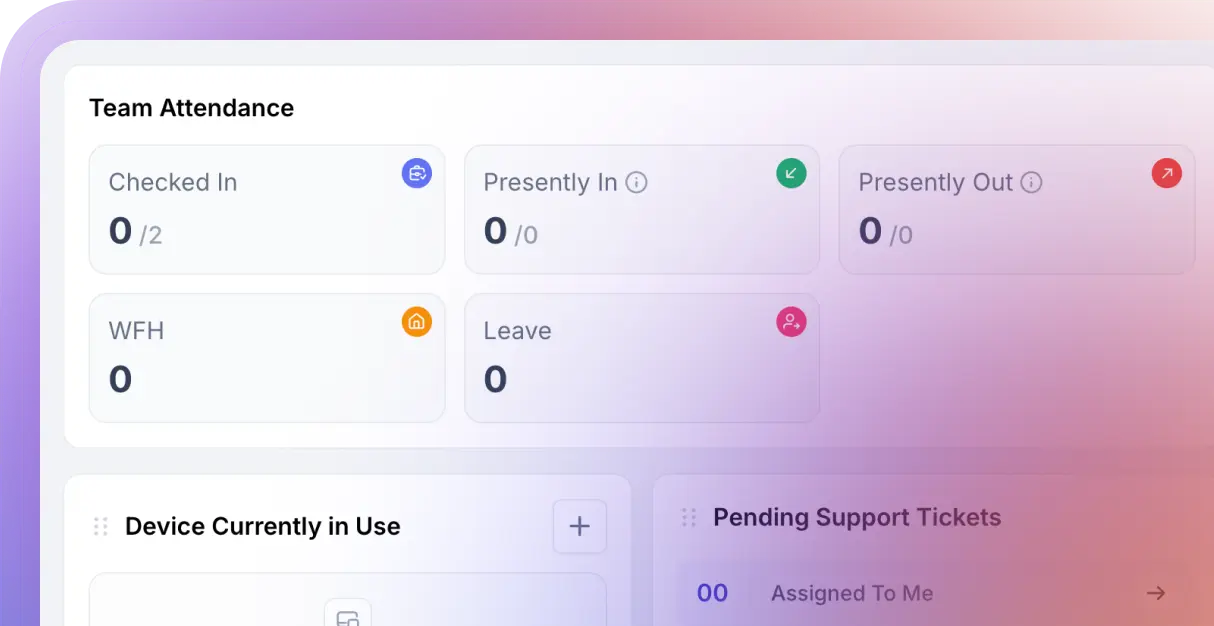The struggle is real!
Every decision, every dollar, and every deadline counts.
Managing projects effectively is crucial to running a successful business, especially for small and medium-sized businesses (SMBs). Yet, many SMBs unknowingly operate with project management processes that leak valuable time, money and resources that could otherwise fuel growth and innovation.
From juggling limited resources to handling complex workflows, inefficiencies can quickly lead to missed deadlines, lost revenue, and frustrated teams. Each team, whether IT, human resources, marketing, sales, operations, finance, or others, can benefit from optimized project management processes, even if the tasks and management styles differ.
When project management processes are inefficient, it creates a ripple effect that impacts not just the project at hand but the entire business.
So, here’s the big question. Could your current project management process be leaking time and money without you even realizing it?
Let’s understand it through before and after scenarios of process optimization in project management.
Before Optimizing the Project Management Process
Before businesses adopt optimized project management practices, they often face numerous challenges that hinder efficiency. These inefficiencies result in wasted time, increased costs, and missed opportunities. Let’s examine a few common issues that occur before process optimization:
Disorganization and Lack of Visibility
Without a centralized system to manage tasks, deadlines, and project details, teams often rely on a patchwork of communication methods such as emails, spreadsheets, or physical notes. This leads to confusion, lost information, and difficulties in tracking progress across multiple projects.
- Time Loss: Team members spend hours searching for information or clarifying misunderstandings.
- Cost Implications: Missed deadlines and unclear responsibilities lead to overwork, rework, and project delays, all of which cost money.
Inefficient Resource Allocation
In the absence of a clear resource management system, project managers often struggle to balance workloads, leading to underutilization or overburdening of team members.
- Time Loss: Teams waste time figuring out who is available to take on additional work, leading to delays in project timelines.
- Cost Implications: Poor resource allocation results in employee burnout or missed opportunities to use available expertise, driving up labor costs and reducing productivity.
Poor Communication
Without structured communication, important updates or changes in the project can easily be missed. This lack of clarity can result in misunderstandings, missed deadlines, and unhappy stakeholders.
- Time Loss: Teams waste time trying to resolve communication issues, leading to delays and inefficiencies.
- Cost Implications: Incorrect assumptions and errors caused by poor communication can lead to costly mistakes, project rework, and missed opportunities.
Inaccurate Reporting and Tracking
Without automation, tracking project progress often requires manual data entry, which increases the likelihood of errors. This can lead to inaccurate reporting, budget overruns, and missed milestones.
- Time Loss: Project managers spend valuable time on data entry and status updates rather than focusing on strategic goals.
- Cost Implications: Inaccurate reporting may result in missed deadlines or budget overruns, leading to financial strain.
After Optimizing the Project Management Process
This isn’t just about solving problems; it’s about transforming the way you manage projects.
Optimizing the project management process can dramatically improve efficiency and cost-effectiveness. By adopting project management software, businesses can streamline tasks, foster better communication, and enhance resource allocation.
Below is how optimizing your project management process would provide you with time and cost benefits.
Centralized Project Management System
With unified software, all project details, tasks, deadlines, milestones, and documents are stored in a single, accessible platform. This provides clear visibility and ensures that all team members and stakeholders are on the same page.
- Time Savings: Teams can easily access the latest project updates, eliminating the need to search through emails or spreadsheets.
- Cost Savings: By reducing misunderstandings and information loss, businesses can avoid costly delays and errors.
Better Resource Management and Allocation
It allows managers to allocate resources efficiently, ensuring that the right team members are working on the right tasks at the right time. Resource management tools help track workloads and availability, preventing overwork or underutilization.
- Time Savings: Project managers can quickly identify available resources, reducing the time spent on manual scheduling or coordination.
- Cost Savings: Optimizing resource allocation ensures that all team members are working at full capacity, improving productivity and reducing labor costs.
Improved Communication and Collaboration
It provides real-time communication tools, such as instant messaging, video calls, and comment threads, to keep teams connected. This promotes clearer communication and faster decision-making.
- Time Savings: By using centralized communication channels, team members can exchange information quickly and efficiently, reducing the need for endless meetings or emails.
- Cost Savings: Clear communication reduces the chance of misunderstandings, errors, and rework, ultimately saving time and money.
Automated Reporting and Tracking
These tools automate status updates, progress tracking, and reporting, allowing project managers to easily monitor progress and identify potential bottlenecks. With report management feature, this real-time tracking ensures that projects stay on schedule and within budget.
- Time Savings: Managers no longer need to spend hours creating reports manually. Automated tools generate real-time data and reports, freeing up time for more strategic tasks.
- Cost Savings: With real-time visibility into project performance, businesses can proactively address issues before they escalate into costly problems.
Risk Management and Issue Resolution
Project management software often includes risk management features, helping businesses identify potential risks early and develop mitigation strategies. This proactive approach can prevent costly project delays and failures.
- Time Savings: Early identification of risks allows teams to address potential issues before they become major roadblocks.
- Cost Savings: Preventing risks from escalating helps businesses avoid costly disruptions, ensuring projects are delivered on time and within budget.
Why Project Management Software Is a Game-Changer
Adopting project management software can save your business considerable time and money. These tools provide SMBs with a streamlined approach to managing projects and collaborating effectively. These software solutions come with features such as task management, time tracking, resource allocation, communication tools, and reporting, ensuring that everything runs smoothly from start to finish.
By using project management software, you can:
- Achieve better control over project timelines, reducing delays and improving on-time delivery.
- Ensure efficient use of resources, optimizing labor costs and minimizing waste.
- Enhance team collaboration, improving overall project performance and employee satisfaction.
- Provide real-time visibility, enabling proactive issue resolution and risk management.
The Bottom Line: Efficiency Equals Savings
Optimizing your project management process is essential for saving time and money, especially in today’s competitive business landscape. By adopting project management software and streamlining your processes, you can improve communication, enhance resource management, and ensure that projects are completed on time and within budget. For SMBs, this translates into increased profitability, higher customer satisfaction, and more successful project outcomes.
If you’re ready to take your business to the next level, consider investing in a unified business operating system like CollabCRM that can bring your project management and other departments together, and you can see how it can transform the way you manage your projects. The time and money you save will be worth the investment.
FAQs About Project Management Process
Project management optimization reduces costs by eliminating inefficiencies, minimizing resource waste, and improving task prioritization.
Faster project delivery, lower operational costs, better resource utilization, increased team accountability, reduced scope creep and rework, and enhanced stakeholder communication are the top benefits of improving project management processes.
CollabCRM, Jira, Asana, Clickup, Monday.com, and many others are well-known project management tools that centralize planning, improve visibility, automate repetitive tasks, and help teams stay aligned.
Some of the common project management mistakes include vague project goals and scope, poor communication between stakeholders, underestimating time and resources, lack of risk assessment, not using the right tools or frameworks, and more. These mistakes lead to delays, budget overruns, and reduced team morale.
Yes, project management software is worth the investment for most businesses. It helps centralize information, improve task tracking, streamline communication, and increase team accountability.





